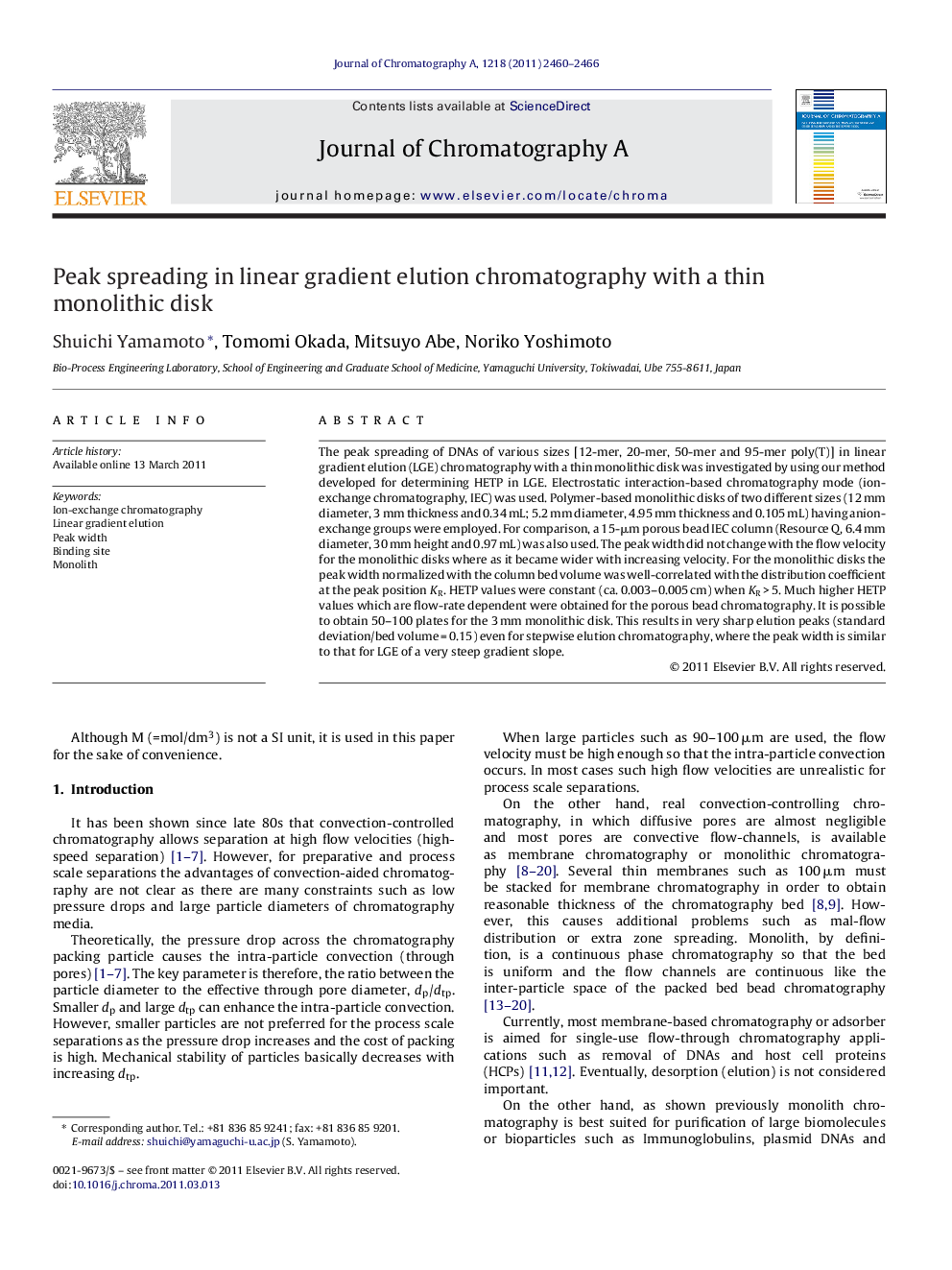| Article ID | Journal | Published Year | Pages | File Type |
|---|---|---|---|---|
| 1204569 | Journal of Chromatography A | 2011 | 7 Pages |
The peak spreading of DNAs of various sizes [12-mer, 20-mer, 50-mer and 95-mer poly(T)] in linear gradient elution (LGE) chromatography with a thin monolithic disk was investigated by using our method developed for determining HETP in LGE. Electrostatic interaction-based chromatography mode (ion-exchange chromatography, IEC) was used. Polymer-based monolithic disks of two different sizes (12 mm diameter, 3 mm thickness and 0.34 mL; 5.2 mm diameter, 4.95 mm thickness and 0.105 mL) having anion-exchange groups were employed. For comparison, a 15-μm porous bead IEC column (Resource Q, 6.4 mm diameter, 30 mm height and 0.97 mL) was also used. The peak width did not change with the flow velocity for the monolithic disks where as it became wider with increasing velocity. For the monolithic disks the peak width normalized with the column bed volume was well-correlated with the distribution coefficient at the peak position KR. HETP values were constant (ca. 0.003–0.005 cm) when KR > 5. Much higher HETP values which are flow-rate dependent were obtained for the porous bead chromatography. It is possible to obtain 50–100 plates for the 3 mm monolithic disk. This results in very sharp elution peaks (standard deviation/bed volume = 0.15) even for stepwise elution chromatography, where the peak width is similar to that for LGE of a very steep gradient slope.
